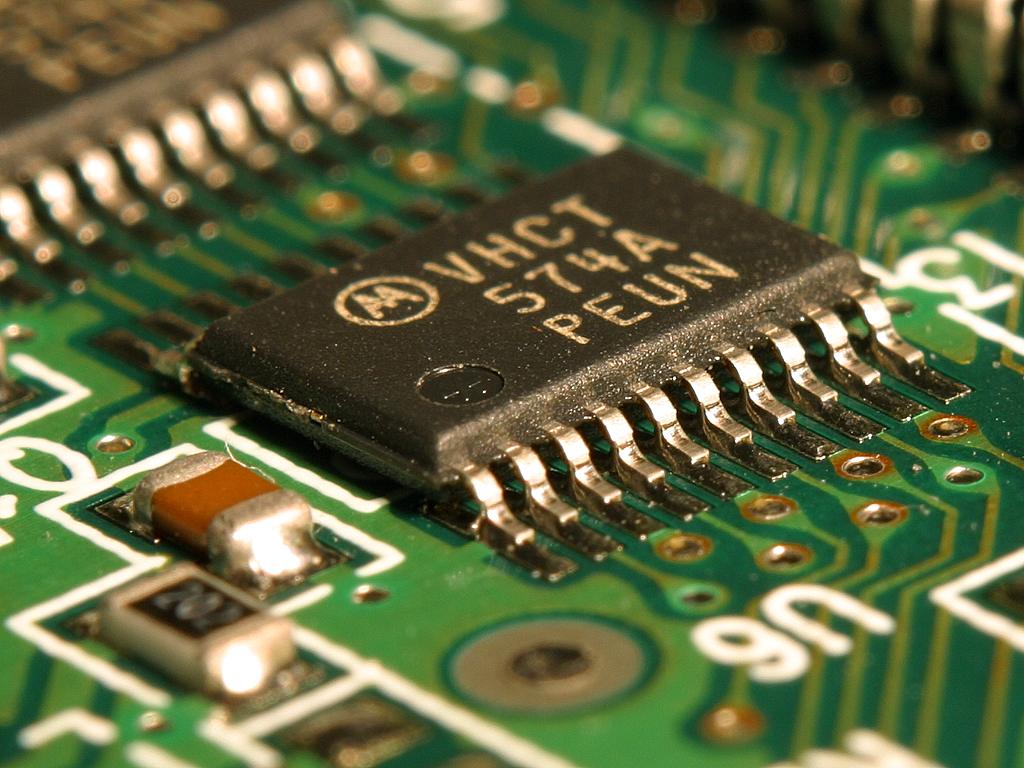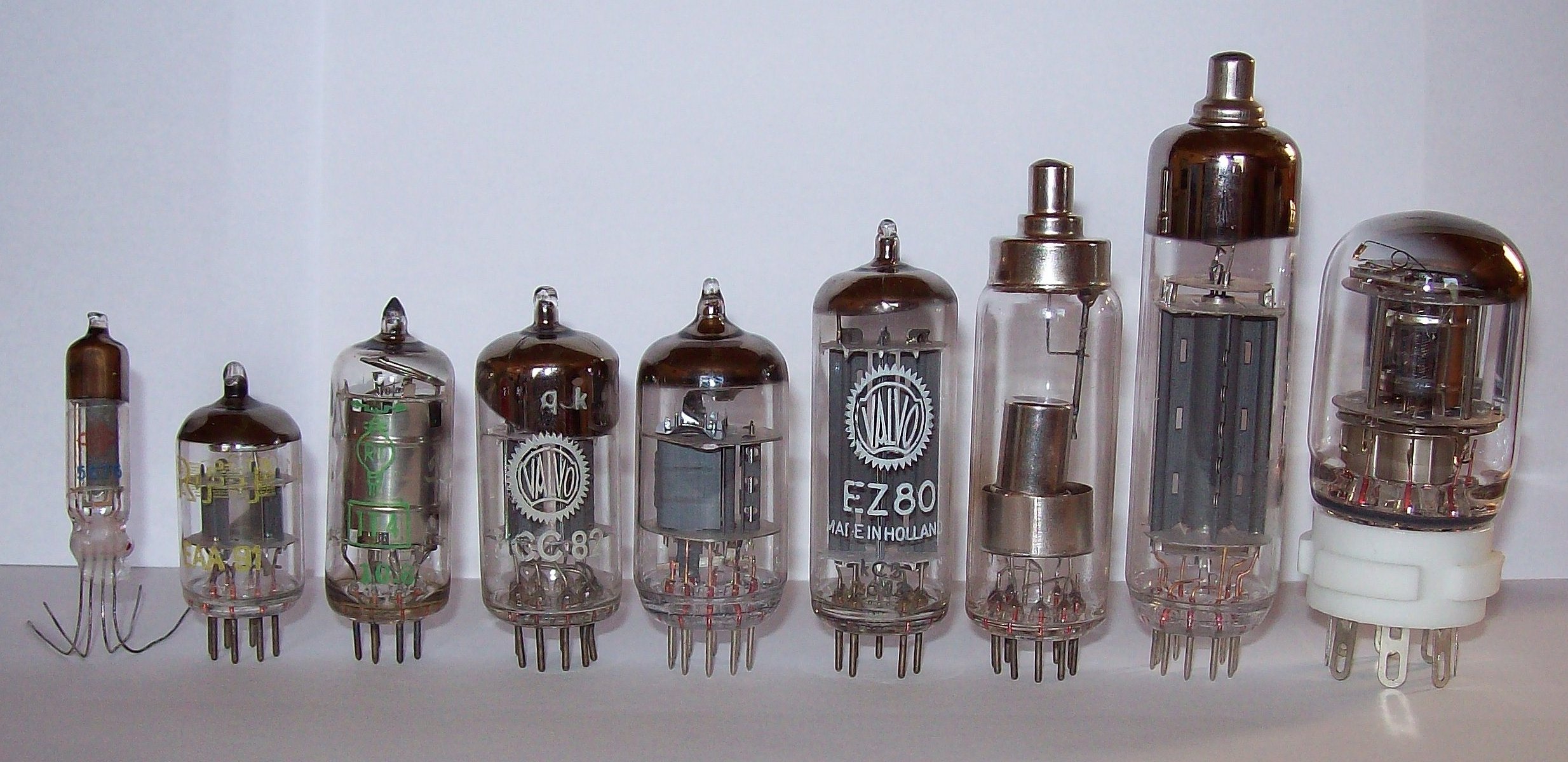|
MANIAC III
The MANIAC III (''Mathematical Analyzer Numerical Integrator and Automatic Computer Model III'') was a second-generation electronic computer (i.e., using solid-state electronics rather than vacuum tubes), built in 1961 for use at the Institute for Computer Research at the University of Chicago. It was designed by Nicholas Metropolis and constructed by the staff of the Institute for Computer Research. Its design was changed to eliminate vacuum tubes, thus it occupied a very small part of a very large and powerfully air-conditioned room. It used 20,000 diodes, 12,000 transistors, and had 16K 48-bit words of magnetic-core memory. Its floating-point In computing, floating-point arithmetic (FP) is arithmetic on subsets of real numbers formed by a ''significand'' (a Sign (mathematics), signed sequence of a fixed number of digits in some Radix, base) multiplied by an integer power of that ba ... multiplication time was 71 microseconds, and division time was 81 microseconds. The M ... [...More Info...] [...Related Items...] OR: [Wikipedia] [Google] [Baidu] |
Solid-state Electronics
Solid-state electronics are semiconductor electronics: electronic equipment that use semiconductor devices such as transistors, diodes and integrated circuits (ICs). The term is also used as an adjective for devices in which semiconductor electronics that have no moving parts replace devices with moving parts, such as the solid-state relay, in which transistor switches are used in place of a moving-arm electromechanical relay, or the solid-state drive (SSD), a type of semiconductor memory used in computers to replace hard disk drives, which store data on a rotating disk. History The term ''solid-state'' became popular at the beginning of the semiconductor era in the 1960s to distinguish this new technology. A semiconductor device works by controlling an electric current consisting of electrons or holes moving within a solid crystalline piece of semiconducting material such as silicon, while the thermionic vacuum tubes it replaced worked by controlling a current of elect ... [...More Info...] [...Related Items...] OR: [Wikipedia] [Google] [Baidu] |
Vacuum Tube
A vacuum tube, electron tube, thermionic valve (British usage), or tube (North America) is a device that controls electric current flow in a high vacuum between electrodes to which an electric voltage, potential difference has been applied. It takes the form of an evacuated tubular envelope of glass or sometimes metal containing electrodes connected to external connection pins. The type known as a thermionic tube or thermionic valve utilizes thermionic emission of electrons from a hot cathode for fundamental Electronics, electronic functions such as signal amplifier, amplification and current Rectifier, rectification. Non-thermionic types such as vacuum phototubes achieve electron emission through the photoelectric effect, and are used for such purposes as the detection of light and measurement of its intensity. In both types the electrons are accelerated from the cathode to the anode by the electric field in the tube. The first, and simplest, vacuum tube, the diode or Flem ... [...More Info...] [...Related Items...] OR: [Wikipedia] [Google] [Baidu] |
Institute For Computer Research
An institute is an organizational body created for a certain purpose. They are often research organisations (research institutes) created to do research on specific topics, or can also be a professional body. In some countries, institutes can be part of a university or other institutions of higher education, either as a group of departments or an autonomous educational institution without a traditional university status such as a "university institute", or institute of technology. In some countries, such as South Korea and India, private schools are sometimes referred to as institutes; also, in Spain, secondary schools are referred to as institutes. Historically, in some countries, institutes were educational units imparting vocational training and often incorporating libraries, also known as mechanics' institutes. The word "institute" comes from the Latin word ''institutum'' ("facility" or "habit"), in turn derived from ''instituere'' ("build", "create", "raise" or "edu ... [...More Info...] [...Related Items...] OR: [Wikipedia] [Google] [Baidu] |
University Of Chicago
The University of Chicago (UChicago, Chicago, or UChi) is a Private university, private research university in Chicago, Illinois, United States. Its main campus is in the Hyde Park, Chicago, Hyde Park neighborhood on Chicago's South Side, Chicago, South Side, near the shore of Lake Michigan about from Chicago Loop, the Loop. The university is composed of an College of the University of Chicago, undergraduate college and four graduate divisions: Biological Science, Arts & Humanities, Physical Science, and Social Science, which include various organized departments and institutes. In addition, the university operates eight professional schools in the fields of University of Chicago Booth School of Business, business, Crown Family School of Social Work, Policy, and Practice, social work, University of Chicago Divinity School, divinity, Graham School of Continuing Liberal and Professional Studies, continuing studies, Harris School of Public Policy, public policy, University of Chi ... [...More Info...] [...Related Items...] OR: [Wikipedia] [Google] [Baidu] |
Nicholas Metropolis
Nicholas Constantine Metropolis (Greek: ; June 11, 1915 – October 17, 1999) was a Greek-American physicist. Metropolis received his BSc (1937) and PhD in physics (1941, with Robert Mulliken) at the University of Chicago. Shortly afterwards, Robert Oppenheimer recruited him from Chicago, where he was collaborating with Enrico Fermi and Edward Teller on the first nuclear reactors, to the Los Alamos National Laboratory. He arrived in Los Alamos in April 1943, as a member of the original staff of fifty scientists. He came back to Los Alamos in 1948 to lead the group in the Theoretical Division that designed and built the MANIAC I computer in 1952 that was modeled on the IAS machine, and the MANIAC II in 1957. Early life and education Nicolas Metropolis was born on June 11, 1915, in Chicago, US. Metropolis received his BSc (1936) and PhD in chemical physics (1941) at the University of Chicago. During his PhD he worked with Robert Mulliken. After graduation, he worked as an ... [...More Info...] [...Related Items...] OR: [Wikipedia] [Google] [Baidu] |
Magnetic-core Memory
In computing, magnetic-core memory is a form of random-access memory. It predominated for roughly 20 years between 1955 and 1975, and is often just called core memory, or, informally, core. Core memory uses toroids (rings) of a hard magnetic material (usually a Ferrite (magnet)#Semi-hard ferrites, semi-hard ferrite). Each core stores one bit of information. Two or more wires pass through each core, forming an X-Y array of cores. When an electrical current above a certain threshold is applied to the wires, the core will become magnetized. The core to be assigned a value – or ''written'' – is selected by powering one X and one Y wire to half of the required current, such that only the single core at the intersection is written. Depending on the direction of the currents, the core will pick up a clockwise or counterclockwise magnetic field, storing a 1 or 0. This writing process also causes electricity to be electromagnetic induction, induced into nearby wires. If t ... [...More Info...] [...Related Items...] OR: [Wikipedia] [Google] [Baidu] |
Floating-point
In computing, floating-point arithmetic (FP) is arithmetic on subsets of real numbers formed by a ''significand'' (a Sign (mathematics), signed sequence of a fixed number of digits in some Radix, base) multiplied by an integer power of that base. Numbers of this form are called floating-point numbers. For example, the number 2469/200 is a floating-point number in base ten with five digits: 2469/200 = 12.345 = \! \underbrace_\text \! \times \! \underbrace_\text\!\!\!\!\!\!\!\overbrace^ However, 7716/625 = 12.3456 is not a floating-point number in base ten with five digits—it needs six digits. The nearest floating-point number with only five digits is 12.346. And 1/3 = 0.3333… is not a floating-point number in base ten with any finite number of digits. In practice, most floating-point systems use Binary number, base two, though base ten (decimal floating point) is also common. Floating-point arithmetic operations, such as addition and division, approximate the correspond ... [...More Info...] [...Related Items...] OR: [Wikipedia] [Google] [Baidu] |
Significant Figures
Significant figures, also referred to as significant digits, are specific digits within a number that is written in positional notation that carry both reliability and necessity in conveying a particular quantity. When presenting the outcome of a measurement (such as length, pressure, volume, or mass), if the number of digits exceeds what the measurement instrument can resolve, only the digits that are determined by the resolution are dependable and therefore considered significant. For instance, if a length measurement yields 114.8 mm, using a ruler with the smallest interval between marks at 1 mm, the first three digits (1, 1, and 4, representing 114 mm) are certain and constitute significant figures. Further, digits that are uncertain yet meaningful are also included in the significant figures. In this example, the last digit (8, contributing 0.8 mm) is likewise considered significant despite its uncertainty. Therefore, this measurement contains ... [...More Info...] [...Related Items...] OR: [Wikipedia] [Google] [Baidu] |
MANIAC I
__NOTOC__ The MANIAC I (Mathematical Analyzer Numerical Integrator and Automatic Computer Model I) was an early computer built under the direction of Nicholas Metropolis at the Los Alamos National Laboratory, Los Alamos Scientific Laboratory. It was based on the von Neumann architecture of the IAS machine, IAS, developed by John von Neumann. As with almost all computers of its era, it was a one-of-a-kind machine that could not exchange programs with other computers (even the several other machines based on the IAS). Metropolis chose the name MANIAC in the hope of stopping the rash of silly acronyms for machine names, although John von Neumann, von Neumann may have suggested the name to him. The MANIAC weighed about . The first task assigned to the Los Alamos MANIAC was to perform more precise and extensive calculations of the thermonuclear process. In 1953, the MANIAC obtained the first equation of state calculated by modified Monte Carlo integration over configuration space. I ... [...More Info...] [...Related Items...] OR: [Wikipedia] [Google] [Baidu] |
MANIAC II
The MANIAC II (''Mathematical Analyzer Numerical Integrator and Automatic Computer Model II'') was a first-generation electronic computer, built in 1957 for use at Los Alamos Scientific Laboratory. MANIAC II was built by the University of California and the Los Alamos Scientific Laboratory and was completed in 1957 as a successor to MANIAC I. It used 2,850 vacuum tubes and 1,040 semiconductor diodes in the arithmetic unit. Overall it used 5,190 vacuum tubes, 3,050 semiconductor diodes, and 1,160 transistors. It had 4,096 words of memory in magnetic-core memory (with 2.4 microsecond access time), supplemented by 12,288 words of memory using Williams tubes (with 15 microsecond access time). The word size was 48 bits. Its average multiplication time was 180 microseconds and the average division time was 300 microseconds. By the time of its decommissioning, the computer was all solid-state, using a combination of RTL, DTL and TTL. It had an array multiplier, 15 index register ... [...More Info...] [...Related Items...] OR: [Wikipedia] [Google] [Baidu] |
One-of-a-kind Computers
One of a Kind may refer to: Film and television * ''One of a Kind'' (film), a 2013 French film * ''One of a Kind'' (game show), a 1958–1959 Canadian panel show * ''One of a Kind'' (TV series), a 1978 Canadian children's series Television episodes * "One of a Kind", ''ABC Afterschool Special'' season 7, episode 1 (1978) * "One of a Kind", ''Brandy & Mr. Whiskers'' season 1, episode 30 (2005) * "One of a Kind", ''Danny Phantom'' season 1, episode 3 (2004) * "One of a Kind", ''Diners, Drive-Ins and Dives'' season 2, episode 8 (2007) * "One-of-a-Kind", ''Instinct'' season 2, episode 6 (2019) * "One of a Kind", ''Jay Leno's Garage'' season 4, episode 7 (2018) * "One of a Kind", ''Knots Landing'' season 3, episode 6 (1981) * "One of a Kind", ''Photon'' episode 14 (1986) * "One of a Kind", ''The Hogan Family'' season 2, episode 7 (1986) * "One of a Kind", ''Thunderbirds 2086'' episode 6 (1982) * "One of a Kind", ''Say Yes to the Dress'' season 7, episode 4 (2011) ... [...More Info...] [...Related Items...] OR: [Wikipedia] [Google] [Baidu] |
48-bit Computers
In computer architecture, 48-bit integer An integer is the number zero (0), a positive natural number (1, 2, 3, ...), or the negation of a positive natural number (−1, −2, −3, ...). The negations or additive inverses of the positive natural numbers are referred to as negative in ...s can represent 281,474,976,710,656 (248 or 2.814749767×1014) discrete values. This allows an Unsigned integer, unsigned binary integer range of 0 through 281,474,976,710,655 (248 − 1) or a Signed number representations, signed two's complement range of −140,737,488,355,328 (−247) through 140,737,488,355,327 (247 − 1). A 48-bit memory address can directly address every byte of 256 terabytes of storage. 48-bit can refer to any other Data (computing), data unit that consumes 48 bits (6 octet (computing), octets) in width. Examples include 48-bit Central processing unit, CPU and Arithmetic logic unit, ALU computer architecture, architectures that are based on processor register, re ... [...More Info...] [...Related Items...] OR: [Wikipedia] [Google] [Baidu] |




